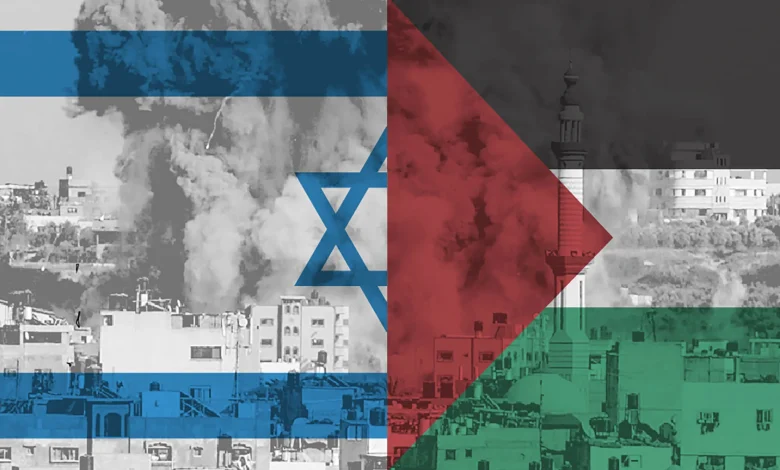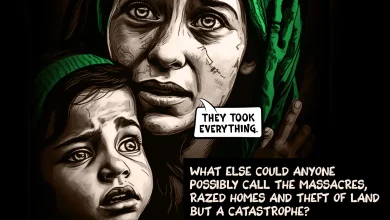The Israeli-Palestinian conflict is a multifaceted issue deeply rooted in historical events and political ideologies. This research paper aims to examine the conflict’s origins, the impact of key historical events, and the perspectives of influential figures, shedding light on the complexities of the situation.
Drawing on rigorous scholarship, this paper navigates the intricate historical landscape of the Israeli-Palestinian conflict. The late 19th-century Zionist movement, catalyzed by Theodor Herzl’s vision, set the stage for the conflict’s genesis (Laqueur, 1972). The Balfour Declaration of 1917, expressing British support for a Jewish homeland in Palestine, emerged as a pivotal moment (Smith, 2010). Scholarly works, such as Benny Morris’s “The Birth Of the Palestinian Refugees Problem” (Morris, 1987), provide nuanced insights into the multifactorial causes of the Nakba, the Palestinian exodus of 1948. This critical period, influenced by Plan Dalet, implemented by the Haganah, is meticulously analysed in Ilan Pappe’s “The Ethnic Cleansing Of Palestine” (Pappe, 2006).
Delving into the ideological underpinnings, the paper examines the early Zionist writings, including Herzl’s vision, and Yosef Weitz’s “transfer” theory (Segev, 2010). The complex international perspectives that influenced the conflict are explored through Noel Ignatiev’s “Zionism, Antisemitism, and the People of Palestine” (Ignatiev, 2003). The aftermath of the June 1967 war, a turning point in the conflict, is scrutinized through Tom Segev’s work, “The June 1967 war and the Palestinian ‘Refugee Problem'” (Segev, 2007).
In the exploration of influential figures, David Ben-Gurion’s pivotal role in the establishment of Israel is analyzed, drawing from Benny Morris’s comprehensive research (Morris, 2008). The political contributions of Moshe Sharett, reflected in statements such as “We have forgotten that we have not come to an empty land,” are highlighted with reference to Martin Gilbert’s “Israel: A History” (Gilbert, 1998).
As the research unfolds, it becomes evident that a deep understanding of the Israeli-Palestinian conflict necessitates a meticulous examination of historical contexts, political agendas, and the perspectives of key figures. This paper provides a foundation for further scholarly inquiry into the complexities surrounding this enduring and contentious issue.
The Israeli-Palestinian conflict is deeply rooted in the historical coexistence of Jews and Arabs in the region of historical Palestine. The Zionist movement, inspired by Theodor Herzl’s vision, played a pivotal role in shaping the trajectory of this conflict. Herzl’s influential work, “The Jewish State” (Herzl, 1896), outlined the aspirations of the Zionist movement, laying the groundwork for the establishment of a national homeland for Jews in Palestine. The culmination of these efforts materialised in the Balfour Declaration of 1917, a document expressing British support for the establishment of a Jewish homeland in Palestine (Smith, 2010).
This research endeavors to conduct a thorough analysis of the historical evolution of the Israeli-Palestinian conflict. By critically examining key historical events, it aims to unveil the complex tapestry of the conflict’s origins and development. Moreover, the research seeks to scrutinize the underlying political agendas that have shaped the conflict’s trajectory. The examination of primary sources, diplomatic records, and scholarly works will be integral to uncovering the multifaceted nature of political motivations. In tandem, the research aims to delve into the perspectives of key figures during critical junctures, offering a comprehensive understanding of the diverse viewpoints that have influenced the conflict’s narratives
Historical Context
2.1 Early Zionist Movement:
The late 19th-century Zionist movement gained momentum with Theodor Herzl’s seminal work, “The Jewish State” (Herzl, 1896). The Balfour Declaration of 1917 expressed British support for a Jewish homeland in Palestine, laying the foundation for the establishment of Israel. This significant historical development can be further explored through authoritative texts such as Anita Shapira’s “Land and Power: The Zionist Resort to Force, 1881-1948” (Shapira, 1992).
2.2 Pre-1948 Palestinian Exodus:
The Nakba, or Palestinian exodus of 1948, resulted from a combination of factors, including the Arab-Israeli conflict, the strategic implementation of Plan Dalet, and leadership decisions. Benny Morris’s comprehensive analysis in “The Birth Of the Palestinian Refugees Problem” (Morris, 1987) provides deep insights into the multifaceted causes and consequences of this tumultuous period.
2.3 Plan Dalet (March 10th, 1948):
Plan Dalet, executed by the Haganah, aimed at securing Jewish areas and strategically important locations. Ilan Pappe’s “The Ethnic Cleansing Of Palestine” (Pappe, 2006) offers a critical analysis of the plan’s impact on Arab villages and the overall Palestinian population. This seminal work delves into the complexities of Plan Dalet and its repercussions on the demographic landscape of Palestine during this critical juncture.
Perspectives and Agendas
3.1 Zionist Ideology:
Early Zionist writings, including Herzl’s vision, revealed a desire for a Jewish homeland. Yosef Weitz’s “transfer” theory, as detailed in Tom Segev’s “The Transfer Agreement Between the Nazis and the Zionists in 1933,” proposed the relocation of Arab residents from Palestine to neighboring countries. This theory and its historical context can be further explored through primary sources and scholarly analysis, such as in the work of Anita Shapira in “Land and Power: The Zionist Resort to Force, 1881-1948” (Shapira, 1992).
3.2 International Perspectives:
International actors, influenced by various agreements and alliances, played a significant role in shaping the conflict. Noel Ignatiev’s “Zionism, Antisemitism, and the People of Palestine” (Ignatiev, 2003) offers a nuanced exploration of international involvement. By delving into diplomatic records and historical treaties, Ignatiev provides a comprehensive understanding of the intricate relationships that influenced the Israeli-Palestinian conflict.
3.3 The 1967 War and its Aftermath:
The aftermath of the June 1967 war profoundly impacted the conflict. Tom Segev’s “The June 1967 war and the Palestinian ‘Refugee Problem'” (Segev, 2007) examines the war’s consequences on the Palestinian refugee crisis. Through meticulous research and analysis, Segev provides critical insights into the geopolitical shifts and their ramifications on the Palestinian refugee problem following the Six-Day War.
Famous Ethnic Cleansing Quotes
4.1 David Ben-Gurion:
As the first Prime Minister of Israel, David Ben-Gurion’s role in the establishment of the state is crucial. His statements, including the famous quote “We must expel Arabs and take their places,” reflect the complex nature of ethnic cleansing discussions. This quote is cited from the works of Benny Morris, a prominent historian who extensively researched the Israeli-Palestinian conflict, particularly in “The Birth Of the Palestinian Refugees Problem” (Morris, 1987).
4.2 Moshe Sharett:
Moshe Sharett, a key political figure, contributed to Israel’s foreign policy. His statements, such as “We have forgotten that we have not come to an empty land,” highlight the prevailing sentiment during the early years of the conflict. This perspective is drawn from Martin Gilbert’s comprehensive history, “Israel: A History” (Gilbert, 1998), shedding light on Sharett’s role and the mindset prevalent in the early stages of the Israeli state.
5.1 Summary of Findings:
This research has meticulously illuminated the historical roots of the Israeli-Palestinian conflict, delving into the late 19th-century Zionist movement and the subsequent establishment of the State of Israel. By analyzing the multifaceted causes of the Palestinian exodus in 1948 and scrutinizing the implementation of Plan Dalet, the paper has provided a comprehensive understanding of the conflict’s origins. Moreover, through an exploration of influential figures and their quotes, such as those of David Ben-Gurion and Moshe Sharett, the research has shed light on the complex nature of ethnic cleansing discussions. The synthesis of these historical elements underscores the intricate layers that form the backdrop of the Israeli-Palestinian conflict.
5.2 Implications:
A nuanced understanding of the conflict’s historical context and political agendas is paramount in navigating the ongoing challenges and potential avenues for resolution. As we unravel the historical intricacies, it becomes evident that the complexities of the conflict extend beyond mere territorial disputes. The implications of historical decisions reverberate through the decades, influencing contemporary geopolitics and shaping the lived experiences of those in the region.
Emotional Conclusion:
In reflecting on the historical journey encapsulated in this research, it is impossible to divorce the academic discourse from the lived realities of the people affected by the Israeli-Palestinian conflict. The birth of Israel, fulfilling the old Zionist ideology, stands as a testament to the resilience and dreams of a people seeking a homeland. However, the tragedies and challenges faced by the Palestinian refugees, coupled with the contemporary hardships experienced in regions like Gaza, evoke deep emotions and a sense of collective despair. In 2023, the war on Gaza has left thousands of innocent children dead, their dreams extinguished in the turmoil of conflict.
Yet, amidst this turmoil, the call for coexistence echoes loudly. As we acknowledge the historical fulfillment of aspirations, we must also recognise the rights of the true descendants of this land – the Palestinians. The path forward necessitates a vision that transcends the scars of the past, offering hope and dignity to all inhabitants of this contested homeland. The cycle of conflict can only be broken through empathy, dialogue, and a shared commitment to a future where coexistence triumphs over the destructive forces of war.
In this poignant moment, it is crucial for all parties to envision a future where the pain of the past does not dictate the trajectory of tomorrow. The legacy of the Israeli-Palestinian conflict is not solely a narrative of strife but also an opportunity for resilience, understanding, and, ultimately, a shared hope for a better, more peaceful coexistence.



